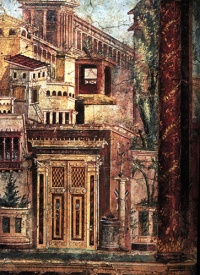
[Amazon.com][FR][DE][UK]
When a friend of a friend recommended The Barbarians by Italian writer Alessandro Baricco a year ago I dismissed it as yet another instance of much resented cultural pessimism.
I was wrong.
It is the most refreshing cultural criticism books of the last twenty years. The discourse on the Chinese wall alone — “an idea written in stone,” Baricco calls it — is worth the price of the book.
The book is held together by four mottoes, one of which is “Zu Micky-Maus,” a fragment by personal poulain Walter Benjamin. Benjamin is also quoted with the dictum (new to me) “Boredom is the dream bird that hatches the egg of experience.”
In the first part “plunder” the author takes us on a tour around the pillaged villages of wine, soccer and books to inspect the ravages that the barbarians have inflicted.
The second part is about Google and honors Google with the title “new Gutenberg”. This part also speaks of us humans becoming fish, breathing through gills, becoming mutants.
The third part is about loosing’s one’s soul, a common complaint of cultural elitists.
Part IV is dedicated to some keywords of barbarism. I especially remember spectacle, and I could not help being reminded of Guy Debord’s The Society of the Spectacle.
10/10 for this nobrow masterpiece.







..jpg)
